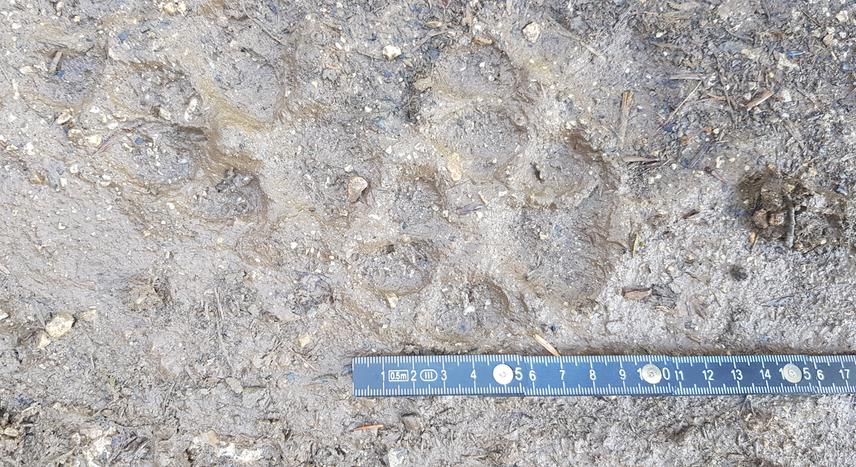Tijana Trbojević
Other projects
2 Feb 2023
Searching for the Balkan Lynx in Southeast Bosnia and Herzegovina and Western Montenegro - Part II
Short description of project:
Traces of the presence of lynx have been found in previous research in southeastern Bosnia and Herzegovina (B&H) and a small part of western Montenegro (MNG).
The results so far show an expansion of the lynx population, which is excellent and significant news, since the Dinaric population suffered from a serious decline in the last 20 years, mainly due to a high level of inbreeding. However, many more answers still need to be obtained: how many individuals are present; determine the morphological characteristics of these individuals (important for their further monitoring); whether the individuals have permanently inhabited the study area and collect evidence of their reproduction.

Lynx footprint on Maglić mountain
The aim of this project is:
• Collect hard evidence of the permanent presence of lynx (photography, footprints in the snow, and mud);
• Determine the size of the territory and abundance of the inhabited individual(s);
• Collect lynx hair samples for genetic analysis;
• Establish monitoring of lynx in Montenegro, and
• Initiate a discussion-process for the protection of this research area in Montenegro.
The research will be carried out in areas of mountains Maglić (B&H and MNG) and Volujak (B&H and MNG). The total surface of the research area is 190 km² with an altitude range from 780-2,386 m s. l.. The total length of transect on which the fieldwork will be done is 64 km. The research area is 71% covered by forest (beech, oak, pine, meadows, and spruce) and the rest are pastures (9%) and rocks (20%). The area is also very rich with fauna (brown bear, gray wolf, chamois, roe deer, wild boar, hare...), and nomadic livestock breeding is present (sheep, cattle, horses, and goats). The habitat has extremely favourable living conditions for lynx.
The study area will be divided by a grid of 10x10 km. One automatic camera (photo-trap) will be used for every 10 km of the grid, on the predicted transects. Animal’s use these transects in their movements through the habitat. The focus of fieldwork is on searching for lynx during snow cover. In winter (snowy) conditions, looking for footprints, and other signs of the presence of lynx (faeces, urination, and hair), will be searched by snowmobiles, skis, and snowshoes.